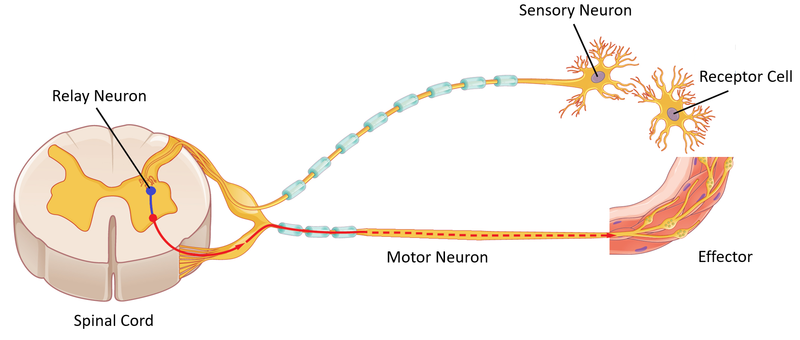A motor reflex arc is a neural pathway that allows for the rapid and automatic response to a stimulus. It involves the activation of sensory receptors, the transmission of signals through sensory neurons to the spinal cord, and the activation of motor neurons to produce a reflexive behavior. This process occurs outside of conscious control and is essential for the maintenance of homeostasis and the protection of the body.
The first step in a motor reflex arc is the activation of sensory receptors. These receptors, which are located throughout the body, are sensitive to specific stimuli such as heat, cold, pressure, and pain. When a stimulus activates a sensory receptor, it sends a signal through a sensory neuron to the spinal cord.
The spinal cord is a long, delicate tube of neural tissue that runs through the vertebral column and serves as a major pathway for the transmission of signals between the brain and the rest of the body. When a sensory neuron sends a signal to the spinal cord, it activates a reflexive behavior by activating motor neurons that control the muscles.
The motor neurons, in turn, send signals to the muscles to produce the reflexive behavior. This can be something as simple as a reflexive withdrawal of a hand from a hot surface or as complex as a series of movements that allow an animal to escape a predator.
There are several types of reflex arcs, including monosynaptic reflex arcs, which involve a single sensory neuron and a single motor neuron, and polysynaptic reflex arcs, which involve multiple neurons and more complex behaviors.
Reflex arcs are essential for the maintenance of homeostasis and the protection of the body. They allow the body to quickly and automatically respond to stimuli, ensuring that it can maintain a stable internal environment and protect itself from harm. Without reflex arcs, the body would be much slower to respond to stimuli and would be more vulnerable to injury and disease.
In summary, a motor reflex arc is a neural pathway that allows for the rapid and automatic response to a stimulus. It involves the activation of sensory receptors, the transmission of signals through sensory neurons to the spinal cord, and the activation of motor neurons to produce a reflexive behavior. This process is essential for the maintenance of homeostasis and the protection of the body.







